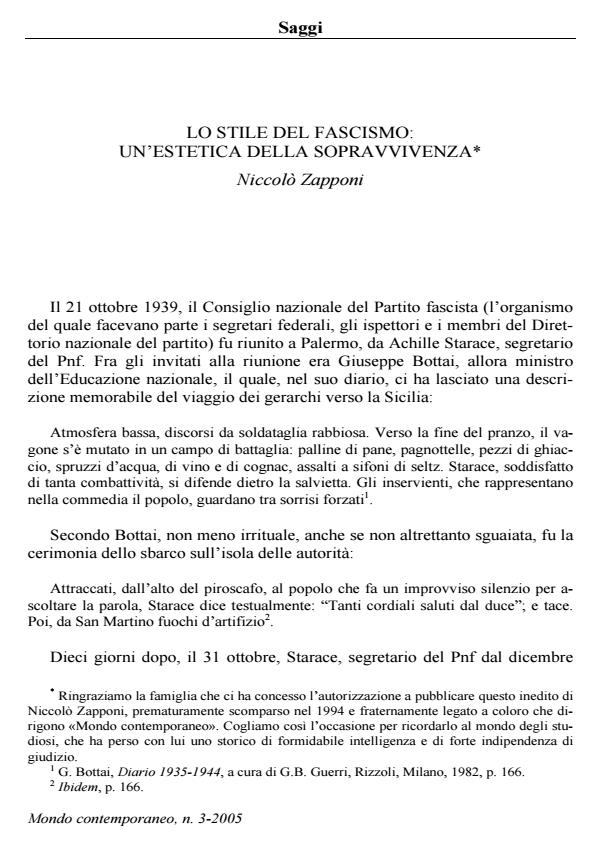Lo stile del fascismo: un'estetica della sopravvivenza
Titolo Rivista MONDO CONTEMPORANEO
Autori/Curatori Niccolò Zapponi
Anno di pubblicazione 2005 Fascicolo 2005/3
Lingua Italiano Numero pagine 46 P. Dimensione file 190 KB
DOI
Il DOI è il codice a barre della proprietà intellettuale: per saperne di più
clicca qui
Qui sotto puoi vedere in anteprima la prima pagina di questo articolo.
Se questo articolo ti interessa, lo puoi acquistare (e scaricare in formato pdf) seguendo le facili indicazioni per acquistare il download credit. Acquista Download Credits per scaricare questo Articolo in formato PDF

FrancoAngeli è membro della Publishers International Linking Association, Inc (PILA)associazione indipendente e non profit per facilitare (attraverso i servizi tecnologici implementati da CrossRef.org) l’accesso degli studiosi ai contenuti digitali nelle pubblicazioni professionali e scientifiche
The essay deals with the Fascist style which is considered as the aesthetic political expression of Fascism and also as the impenetrable wrapping of its shrewdness and of its despise for the opponents condemned to defeat. The Fascist style was the means to build the new man, Mussolini’s Italian. Although promoting different styles F.T. Marinetti and Gabriele D’Annunzio are both seen as precursors of the Fascist style, particularly for the dandyish mixture of violence and elegance which were typical of the Futurist behaviour and of D’Annunzio way of life. In Mussolini’s totalitarian project and in the works of the Fascist writers who dealt with the matter, the new Fascist man had an hated and despised enemy: the bourgeois. The bourgeois is figured as a pipsqueak, an ostrich, a hyena, a parasite, as a physically inferior subject, nearer to an animal than to a human being. Achille Starace, Secretary of the Fascist Party for nine years, was the one the Duce chose to shape the new Italian. By 1939 all Italians wore the large variety of Fascist uniforms: the Fascist style was then what Fascists thought military style was. The defeat in the Second World War ended the totalitarian experiment in Italy, and the Fascist style, which consisted largely in warlike education failed in the war. So that it appeared to be an aesthetics of survival for Italians in the Fascist regime.
Niccolò Zapponi, Lo stile del fascismo: un'estetica della sopravvivenza in "MONDO CONTEMPORANEO" 3/2005, pp , DOI: